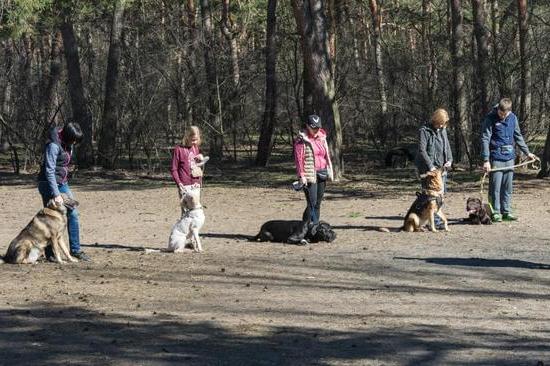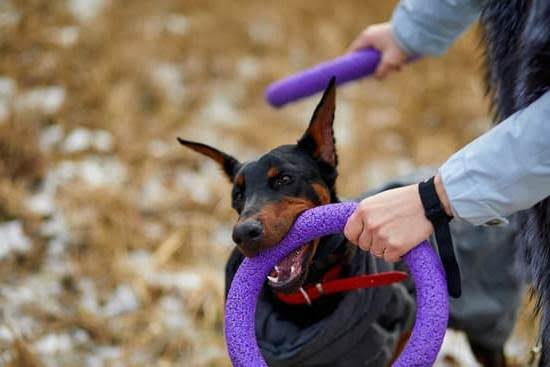Are you wondering how to paper train your old dog? Paper training can be a useful solution for pet owners with senior dogs who may have difficulty holding their bladder for extended periods. This method allows older dogs to relieve themselves indoors on designated papers, eliminating the need for frequent trips outside. In this article, we will explore the ins and outs of paper training for older canine companions.
As dogs age, they may experience various health issues that can affect their ability to control their bathroom habits. Paper training offers a convenient alternative to traditional outdoor potty breaks, especially for elderly dogs with mobility challenges or health conditions. By providing a designated area indoors where your senior dog can eliminate waste, you can help them maintain their dignity and comfort in their golden years.
Before embarking on a paper training journey with your older dog, it’s essential to assess their behavior and health to determine if this method is suitable for them. Understanding your dog’s capabilities and limitations will help you create an effective paper training plan tailored to meet their specific needs. Stay tuned as we delve into the key considerations and steps involved in successfully paper training your old canine companion.
Assessing Your Dog’s Behavior and Health
As you embark on the journey of paper training your old dog, it is important to first assess whether this method is suitable for your furry companion. Not all dogs may adapt well to paper training, so it is crucial to consider your dog’s behavior and health before diving into this training process.
Here are some factors to consider when evaluating if paper training is right for your dog:
1. Age: Older dogs may have already established potty habits, making it more challenging to transition them to paper training. However, with patience and consistency, even older dogs can learn new tricks.
2. Health Issues: If your dog has health issues that make it difficult for them to go outside frequently or hold their bladder for long periods, paper training might be a more practical solution.
3. Behavior: Observe your dog’s behavior and attitude towards new routines. If your dog is easily stressed or anxious, paper training may be a gentler approach compared to outdoor potty training.
Before starting the paper training process, consult with your veterinarian to ensure that there are no underlying health issues that may affect your dog’s ability to adapt to this method. Additionally, observe any signs of resistance or discomfort from your dog during the initial stages of paper training and adjust the approach accordingly.
With careful consideration and understanding of your dog’s needs, you can set them up for success in learning how to use the designated potty area indoors.
Creating a Paper Training Plan
Older dogs can definitely learn new tricks, including how to paper train. Setting up the right environment plays a crucial role in successfully teaching your senior canine friend this new skill. First and foremost, designate a specific area in your home where you will place the training pads or papers. This area should be easily accessible to your dog, but also away from their sleeping and eating space.
In addition to choosing the right location, make sure that the area is secure and comfortable for your old dog. Consider using baby gates or barriers to prevent your dog from wandering off during the training process. Providing a cozy bed or blanket near the training area can also help create a positive association with that spot. Remember, old dogs may take longer to adjust to changes, so patience and consistency are key when setting up their paper training plan.
Furthermore, ensure that the environment is free of distractions that could deter your dog from using the paper. Keep loud noises to a minimum and avoid placing the training pads near high-traffic areas in your home. Creating a calm and quiet atmosphere will help your old dog focus on learning how to use the paper effectively. By establishing the right environment for paper training, you are setting your senior canine companion up for success in mastering this new skill.
| Aspect | Recommendation |
|---|---|
| Designated Area | Select an area away from sleeping and eating spaces. |
| Security Measures | Use barriers such as baby gates to keep your dog in the designated area. |
| Comfort Items | Provide a cozy bed or blanket near the training spot for comfort. |
Establishing a Routine
When determining the best times for potty breaks, observe your dog’s behavior and note any signals they may give when they need to go. Some common signs include sniffing around, circling, whining, or suddenly becoming restless.
By taking your dog to the paper immediately after displaying these behaviors, you can reinforce the habit of using it as their designated potty spot. Remember that older dogs may require more frequent breaks compared to younger ones, so be patient and understanding throughout the training process.
In addition to regular bathroom breaks, make sure to praise and reward your dog each time they successfully use the paper. Positive reinforcement plays a significant role in motivating dogs to repeat desired behaviors.
Verbal praise, treats, or toys can be used as rewards to show your appreciation for their good behavior. Consistency in rewarding positive actions will help reinforce the habit of using the paper for elimination purposes and accelerate the training process on how to paper train your old dog.
Positive Reinforcement Training Techniques
Using Treats and Praise
One of the most effective ways to encourage your old dog to use the paper for potty training is through positive reinforcement. Whenever your dog successfully uses the designated area, immediately reward them with treats and praise. This will help your furry friend associate using the paper with a positive outcome, making them more likely to repeat the behavior in the future. Consistency is key here, as you want to reward your dog every time they use the paper correctly.
Clicker Training
In addition to treats and praise, clicker training can also be a useful tool when paper training your old dog. By using a clicker as a marker for when your dog does something right, you can effectively communicate to them that using the paper is desirable behavior.
Simply click the device as soon as your dog eliminates on the paper, followed by offering them a treat and verbal praise. With repetition, your dog will start associating the sound of the clicker with being rewarded for going potty in the right place.
Patience and Consistency
It’s important to remember that paper training an old dog may take time and patience. Be consistent in your training approach and continue reinforcing good behavior with treats, praise, and clicker training. Avoid scolding or punishing your dog for accidents, as this can create anxiety and hinder their progress.
By remaining patient, consistent, and using positive reinforcement techniques, you can successfully teach your old dog how to use the paper for potty training. Remember that each dog is different, so adjust your methods accordingly based on their individual progress and needs.
Dealing With Accidents
Identifying Accident Signs
When paper training an old dog, accidents are inevitable, especially in the beginning stages of the training process. It is crucial to be able to identify the signs that your dog needs to go potty to prevent accidents from happening indoors. Some common signs include sniffing around excessively, circling a specific area, or suddenly squatting. By being attentive to these cues, you can quickly guide your dog to the designated potty area on time.
Cleaning Up Accidents
Despite your best efforts, accidents may still occur during the paper training process. It is important to clean up messes promptly and effectively to prevent your dog from repeating the behavior in the same spot. Use pet-safe cleaning products to thoroughly clean and eliminate any odors that might attract your dog back to that spot. Positive reinforcement should also follow cleaning up accidents – do not scold or punish your old dog as it may lead to confusion and anxiety.
Staying Patient and Persistent
Dealing with accidents can be frustrating, but it’s essential to remain patient and persistent throughout the paper training journey with your old dog. Remember that transitioning from old habits takes time and consistency. Stay calm and avoid showing frustration when accidents happen – instead, focus on reinforcing positive behaviors when your dog successfully uses the designated potty area. Consistency in training methods and positive reinforcement will ultimately lead to success in paper training your old dog.
Shifting to Outdoor Potty Training
Paper training your old dog is a great option for pet owners who may not have easy access to outdoor spaces or for senior dogs who may have mobility issues. However, if you eventually want to transition your dog to potty outside, it’s important to do so gradually and with patience. Shifting from paper training to outdoor potty training can be a smooth process if done correctly.
To begin the transition, start by gradually moving the designated potty area closer to the door that leads outside. This will help your old dog associate pottying in that spot with going outside. Additionally, take your dog outside at regular intervals, especially after meals or naps, to give them the opportunity to go potty in the designated outdoor area.
Consistency is key during this transition period. Make sure to closely monitor your dog’s behavior and take note of any signals they may give when they need to go outside. Praise and reward your old dog every time they successfully use the outdoor potty area, reinforcing the positive behavior you want to see. With patience and positive reinforcement, your old dog will learn how to properly relieve themselves outdoors in no time.
Troubleshooting Common Challenges
As you embark on the journey of paper training your old dog, it’s important to be prepared for some challenges along the way. Addressing resistance and setbacks is a crucial part of the process to ensure that your furry friend successfully transitions to using the designated potty area. Here are some common challenges you may encounter and how to overcome them:
- Resistance to Using the Paper: Some dogs may initially resist using the paper as their potty area. To address this, make sure the paper is placed in a quiet and accessible location where your dog feels comfortable. Encourage and praise them when they use the paper correctly, and consider using enticing treats to reinforce positive behavior.
- Inconsistency in Potty Habits: If your dog is having trouble consistently using the paper, try to establish a routine for potty breaks throughout the day. Take them to the designated area after meals, naps, and playtime to increase their chances of success. Consistency is key in reinforcing good habits.
- Setbacks and Accidents: It’s normal for accidents to happen during the paper training process, especially with older dogs who may have established habits. When accidents occur, avoid punishing your dog as this can lead to anxiety and confusion. Instead, clean up messes promptly with an enzymatic cleaner to remove any lingering scent markers that may attract them back to that spot.
Dealing with resistance and setbacks requires patience, consistency, and a positive attitude. Remember that every dog is unique and may require different approaches to successful paper training. By staying calm, persistent, and providing plenty of positive reinforcement, you can help your old dog learn how to use the paper effectively for potty breaks.
Celebrating Success
In conclusion, paper training an old dog may seem like a daunting task at first, but with patience, consistency, and the right approach, it can be a successful endeavor. Celebrating your dog’s progress and achievements throughout the training process is essential to maintain motivation and reinforce positive behavior. Remember that every small step towards using the designated paper area should be acknowledged and rewarded to encourage your furry friend to continue on the right path.
As you work through the paper training plan with your old dog, take the time to appreciate each milestone reached. Whether it’s successfully using the paper for the first time or going several days without accidents, acknowledge these moments with praise, treats, or playtime. Consistent positive reinforcement will help solidify the desired behavior in your dog’s routine and build their confidence in the training process.
Moreover, don’t forget to adjust your approach as needed based on your dog’s individual progress and reactions. If you encounter challenges or setbacks along the way while learning how to paper train your old dog, remain patient and adapt your training techniques accordingly.
By staying dedicated to the process and offering ongoing support and rewards for your dog’s efforts, you’ll both ultimately reap the benefits of successful paper training that leads to a cleaner household and a happier canine companion.
Frequently Asked Questions
Is It Possible to Train an Older Dog?
It is definitely possible to train an older dog, although it may require more time and patience compared to training a puppy. Older dogs can still learn new things through positive reinforcement and consistent training sessions.
How Do You Potty Train a 11 Year Old Dog?
Potty training an 11-year-old dog may take a bit longer than potty training a younger dog, but it is still possible. The key is to establish a routine, take them outside frequently, and reward them for going to the bathroom outside. Consistency is crucial in this process.
How Long Does It Take to Potty Train an Older Dog?
The time it takes to potty train an older dog varies depending on the individual dog’s age, breed, and previous training. While some older dogs may catch onto potty training quickly, others may take several weeks or even months to fully grasp the concept. Patience and persistence are key when working with an older dog on potty training.

Welcome to the blog! I am a professional dog trainer and have been working with dogs for many years. In this blog, I will be discussing various topics related to dog training, including tips, tricks, and advice. I hope you find this information helpful and informative. Thanks for reading!





